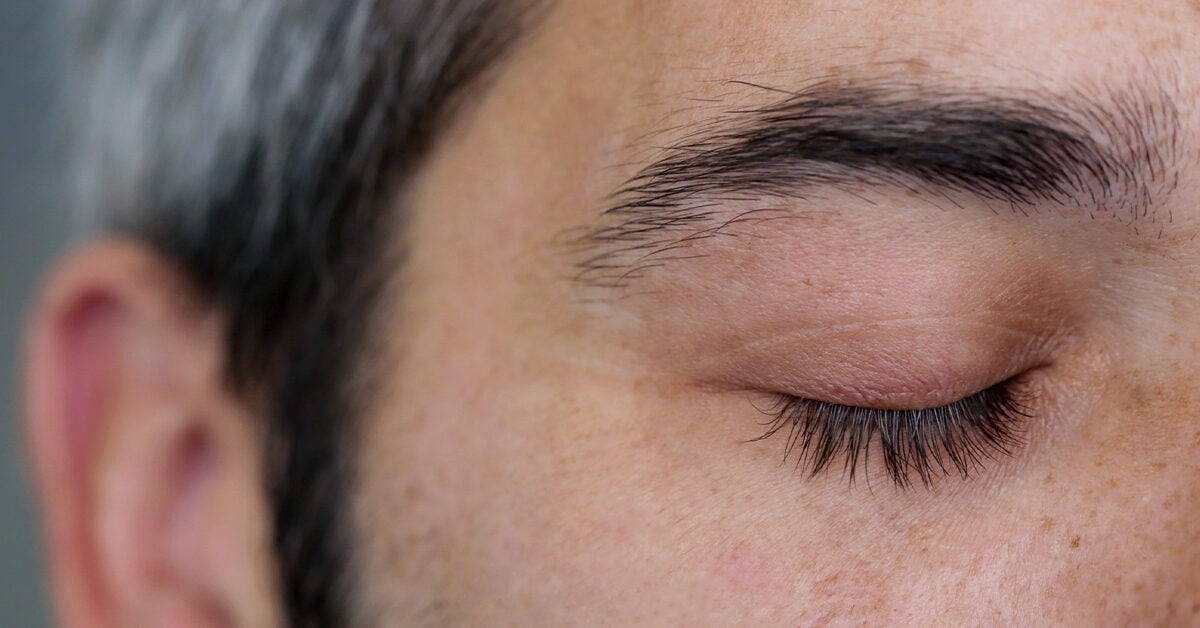Squamous Blepharitis: Inflamed Eyelids and More - Healthline

Non-ulcerative or squamous blepharitis is a type of blepharitis caused by seasonal allergies or other allergic reactions. It can lead to red, swollen eyelids along with patches of white or gray scaly skin.
You can treat this eyelid inflammation disorder with steroid eye drops or home remedies if it doesn't clear up by itself.
This article will explain in more detail about this form of blepharitis, how it differs from other types, why it develops, and what you can do to treat this eyelid disorder.
Blepharitis is a general term that refers to eyelid inflammation. It can be caused by:
Blepharitis is known as anterior or posterior, depending on what part of your eyelid is affected:
- Anterior blepharitis affects the outer portion of your eyelid where your eyelashes attach.
- Posterior blepharitis affects the inner edge of your eyelid where it touches your eyelid.
Doctors also classify blepharitis as ulcerative or nonulcerative.
- Ulcerative blepharitis is often caused by a bacterial infection, and it's characterized by small sores that ooze and bleed.
- Non-ulcerative blepharitis, also called squamous blepharitis, is usually caused by an allergic reaction like seasonal allergies. It doesn't cause open sores but leads to patches of white or gray scaly skin.
Blepharitis may also be described as acute if it onsets suddenly or chronic if it lasts for a long time. Chronic blepharitis is the
How do the types of blepharitis differ?
Squamous and ulcerative blepharitis cause many of the same symptoms. But ulcerative blepharitis is characterized by the formation of small open sores while squamous blepharitis causes white or gray flakes of skin.
Squamous blepharitis usually is caused by allergies whereas the ulcerative form is more likely to be caused by infections.
Infectious ulcerative blepharitis typically causes more crusting due to increased discharge.
Signs and symptoms of non-ulcerative blepharitis can include
Other general symptoms of blepharitis can include:
- eyelids sticking together when you wake up
- flakes or crusts around your eyelashes
- gritty feeling in your eye
- itchy eyes
- burning eyes
As mentioned above, squamous blepharitis is usually caused by an
- weeds
- trees
- grass
Other common irritants in the air that may trigger blepharitis include:
- cigarette smoke
- perfume
- pet dander
- dust mites
- mold spores
In a
- eye drops: 54.2%
- creams or lotions: 24.6%
- cosmetics: 13.1%
Squamous blepharitis isn't a type of cancer and doesn't have the potential to become cancer. But its name is similar to squamous cell carcinoma, which is a type of cancer.
Squamous cell carcinoma develops in the flat cells that make up the outer layers of your skin. About 5% to 10% of skin cancers occur on the eyelid, and about 5% of these are squamous cell carcinoma.
Blepharitis often affects
It's uncommon for it to occur in one eye only, but this might occur if a certain trigger only contacts one of your eyes. For example, you may get a substance you're allergic to on your hand and touch one eye with your hand.
Your eye doctor can diagnose blepharitis by performing a comprehensive eye exam. They can examine your eyes and eyelids with special tools and perform a swab to test for signs of infection.
A blepharitis diagnosis is made clinically, meaning that your doctor can make the diagnosis based on your signs and symptoms alone.
Your doctor can also prescribe steroid eye drops to help you manage your inflammation.
The main treatment for blepharitis is good eyelash hygiene and avoiding triggers. If your symptoms are caused by an allergy, staying away from the substance that triggered your allergies can help prevent reoccurring reactions.
It's a good idea to follow these steps
- Apply a warm compress to your eyes for
5 to 10 minutes to soften debris and oil and make it easier to wipe them away. - Soak a cotton pad in diluted baby shampoo.
- Use the cotton pad to wipe away debris from your eyelids and lashes.
Learn more about making a warm compress.
Your doctor may recommend other treatments to help manage your symptoms like:
- prescription steroid eye drops to control redness, swelling, and irritation
- over-the-counter eye drops to keep your eyes moist
- treatments for underlying causes like rosacea or dandruff
- antibiotic eyedrops if an infection is suspected.
Squamous cell blepharitis is another name for non-ulcerative blepharitis. This form of blepharitis is usually caused by an allergic reaction. It isn't cancerous and doesn't have the potential to be cancer.
Your doctor can help you figure out what might be causing your blepharitis or figure out whether or not you need prescription treatments like antibiotics. Most cases clear up themselves with home remedies or steroid eye drops.



Comments
Post a Comment